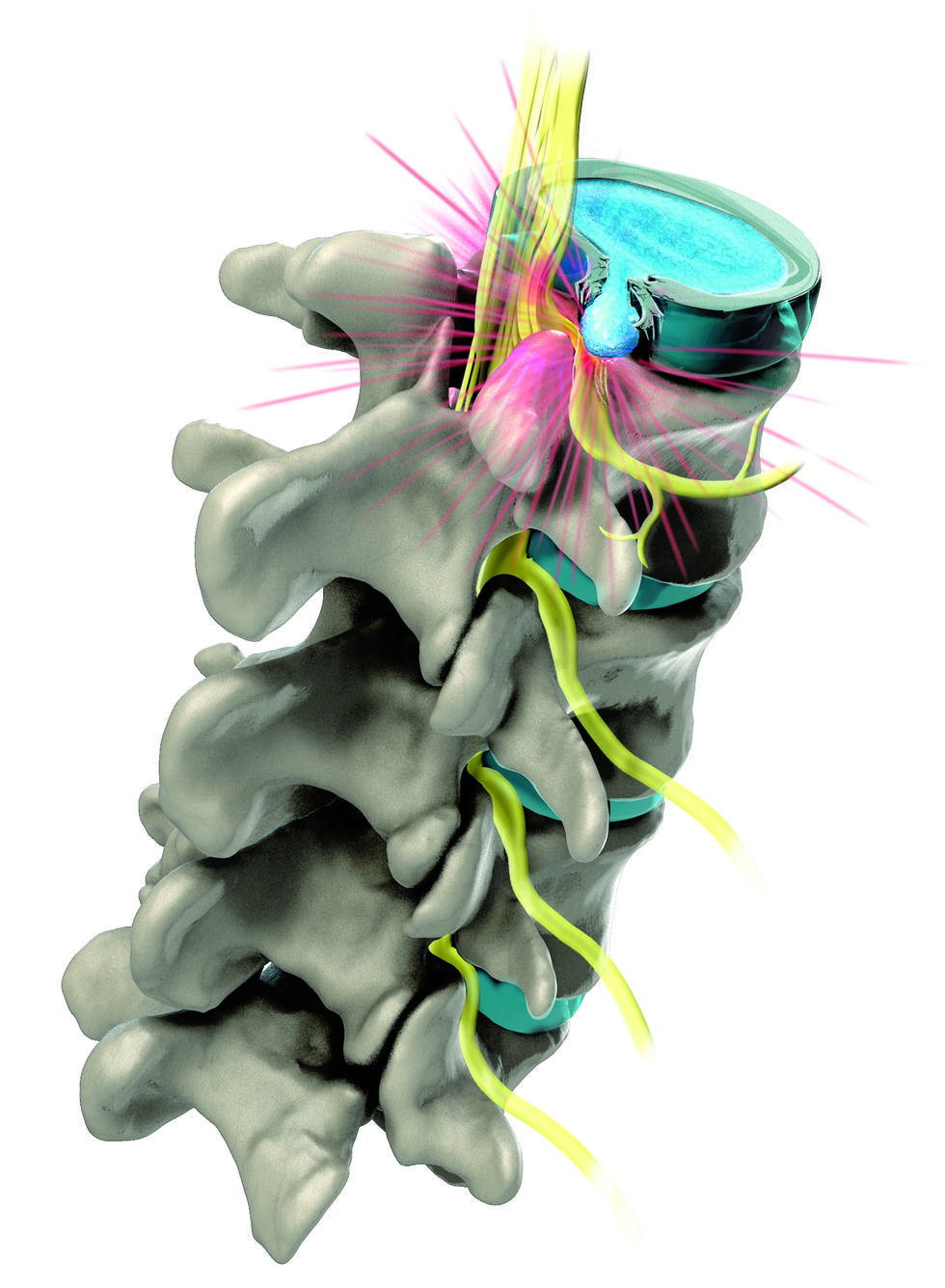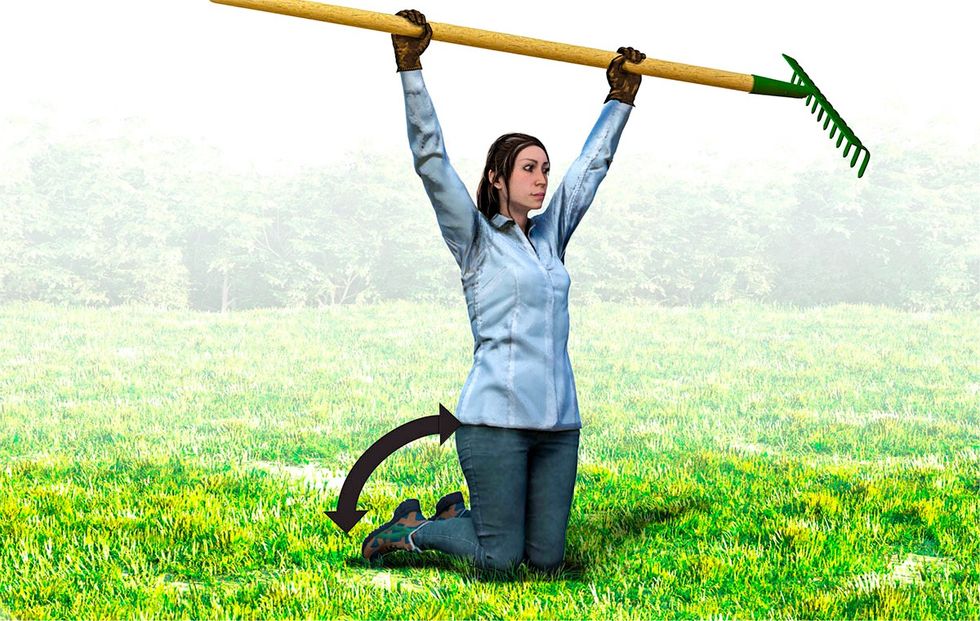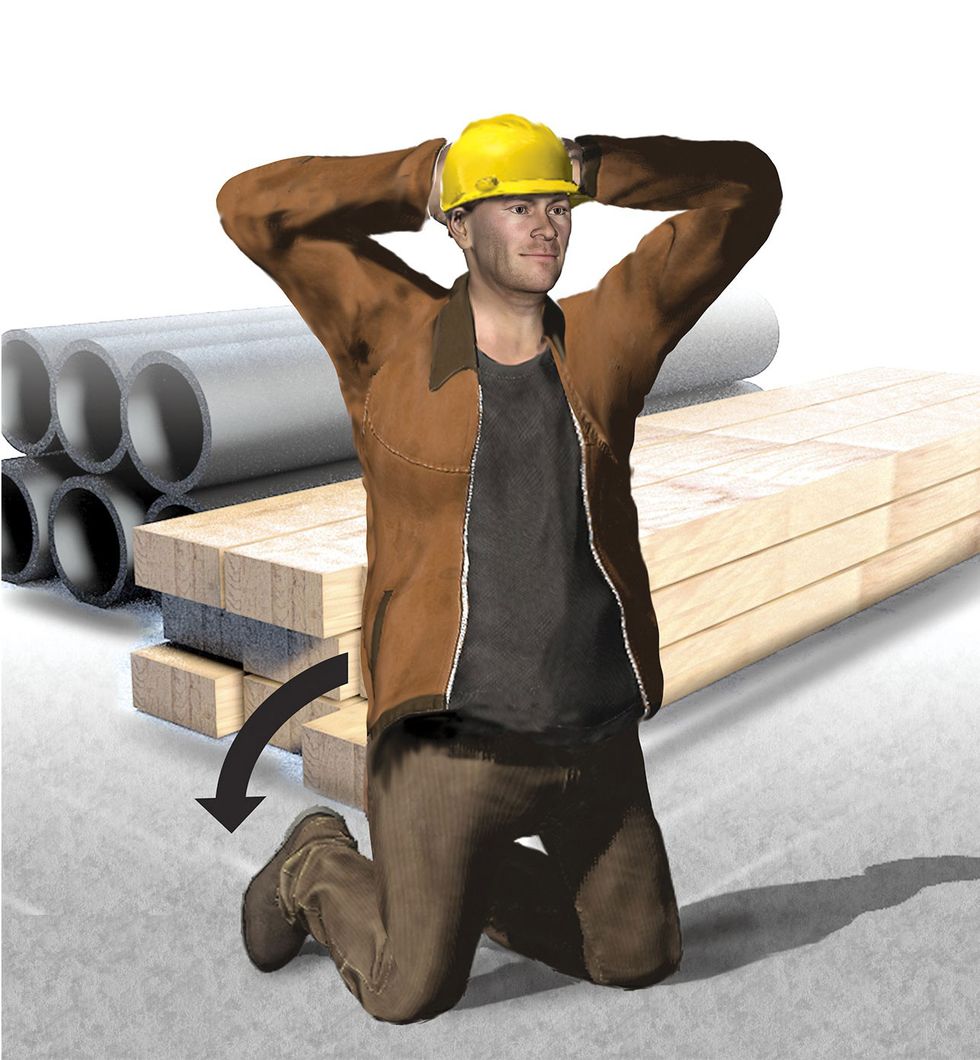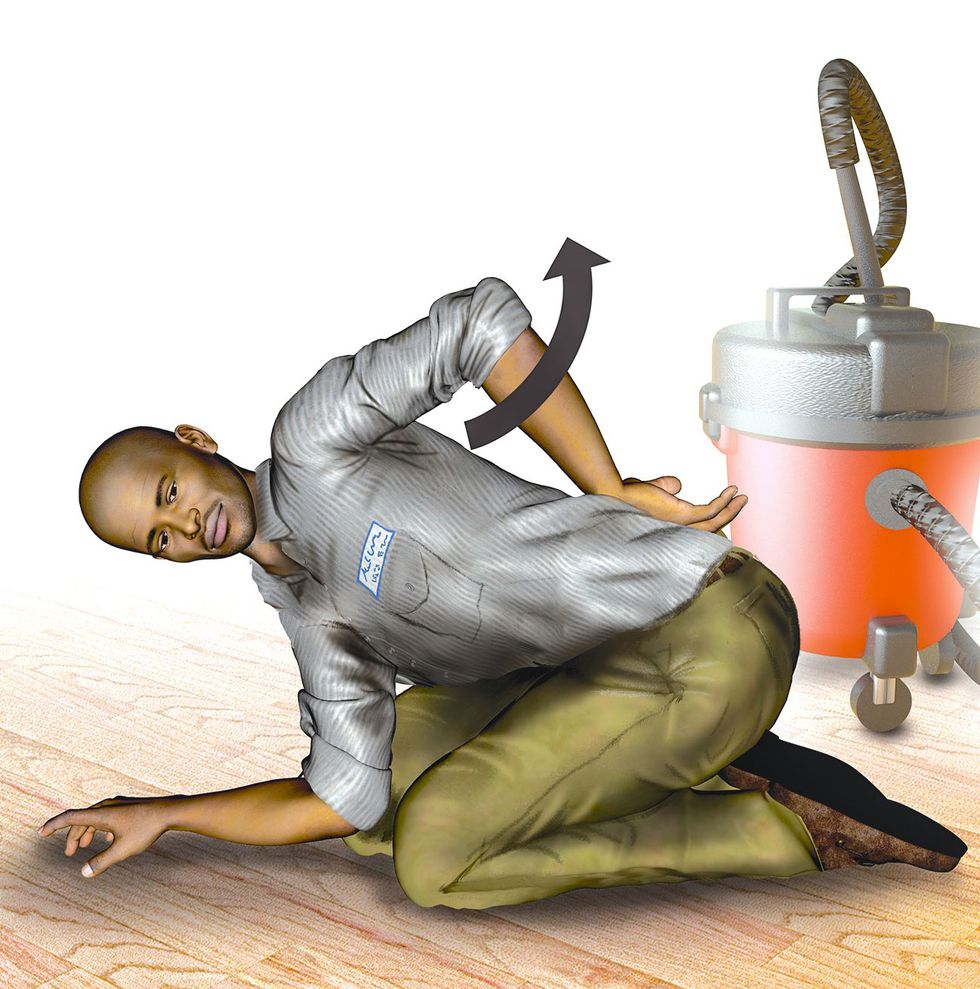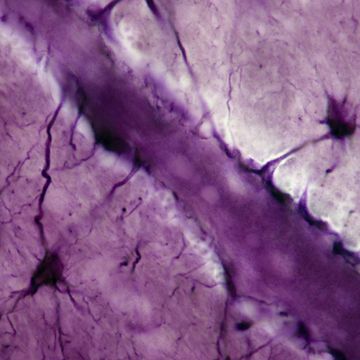If you’ve ever, like me, relied on an Advil bottle to get you through a weekend project, you know how frustrating back pain can be. You don’t need to be a bricklayer to feel beat up. Being handy is tough on the body.
I’ve learned to be good to my back now and can work as hard as ever. But it took some painful lessons. In 2002, years of ignoring lower-back aches and shooting pains came home to roost at 2 a.m. on a Saturday morning. I was woken by sudden shooting pain in my hip so severe, I thought someone had broken in and stabbed me with an ice pick. I was practically paralyzed. The physical therapist I went to told me that intense physical labor, combined with poor posture, long hours at a desk, and subpar body mechanics had bulged and ruptured the disk between my lowest two vertebrae, the L4 and L5. A year of physical therapy followed to increase the flexibility and strength of my back, hip, glute, and hamstring muscles so they would stop pulling my spine out of alignment and restore its natural curve.
Since that painful day, I’ve become a student of my own body and a committed caretaker. But even following my physical therapist’s stretching and strength orders, I wasn’t immune to flare-ups. Two years ago, a combination of fieldwork and overhauling a rental property literally put me on my back again.
This last year, however, has been different. I started working with Chicago-based PT David Reavy, who’s helped me fill in the gaps of my back-maintenance routine. He clued me in to two things no PT had touched on in the last 16 years: building the specific strength a handyman needs (see the next page) and training my muscles and spine to constantly be in a position to perform like an athlete’s, even if I’ll never make a run, catch, or pass.
I tend to let my shoulders roll forward and hunch my upper back (sound familiar?). This sets off a cascading effect of pulling muscles out of alignment, so that when I go to pick up a chop saw or a stack of two-by-fours, my body isn’t braced to carry the weight, opening me up to more pain.
Reavy’s biggest piece of advice is to pull my shoulder blades back and down—to where they’re supposed to be—before doing any work in my shop or yard. Then when I pick up a steel toolbox of ratchets and sockets my back muscles can properly fire, which tells my stomach muscles to engage, and suddenly that 25-pound box is a lot easier to lift onto my workbench.
Reavy’s routine isn’t going to give you a beach body. I didn’t have a beach body when I was a young man hauling two loads of shingles up a ladder, and at 59 I still don’t have one. But it will give you a body that’s prepared to do the physical labor we handy people find ourselves doing throughout our lives. We give constant attention to our trucks and houses to keep them working. Our bodies deserve the same.
It’s not just hard work that strains your back, it’s all work. “Everything we do is in front of us, whether it’s at a desk or manual labor, and gravity is always pulling down, making our back work to keep us balanced front to back,” says David Reavy, owner of Chicago’s React Physical Therapy, whose body-maintenance routine helped Philadelphia Eagles receiver Alshon Jeffery play all of last season with a torn rotator cuff.
As our work pulls us forward and down, the body responds with a coordinated effort by the lats (the mid-back muscles that help you pull a recoil starter), abs, and glutes to stabilize the spine and reduce the stress on the back and arms. It’s an effective response, but it requires upkeep. When your back rounds forward, it pulls your shoulder blades and lats out of place and they can’t do their job. Because the back-support muscles fire together reflexively, if your lats aren’t firing, your abs and glutes won’t get a signal to turn on, says Reavy. In Roy’s case, his muscles were turned off by his posture, which meant they weren’t balancing the front-to-back stress on his spine—that’s why Reavy’s first advice to Roy was to pull his shoulder blades back and down. By rounding forward while he worked, he was pinching the front of his L4 to L5 disk. Eventually it gave out.
The good news, says Reavy, is that even if you’ve herniated a disk, it’s not too late to balance the forces on your spine and return to your old activities, or, if you’re in better shape, simply reduce aches and pains. When your muscles work together, they not only protect you, they make you noticeably stronger when it’s time to haul tools or building supplies, says Reavy.
Add these three moves to your morning or evening routine to train and maintain your lats, abs, and glutes. They shouldn’t take more than 15 minutes, and, as Roy attests, it’s well worth your time.
What is a herniated disk?
Your spine has 23 intervertebral disks between its vertebrae that act as shock absorbers. Each disk has a thick, fibrous outer layer and a gel-like center. When a disk receives too much pressure on one side, the gel pushes toward and can rupture the opposite side of the outer layer. That’s a herniated disk. It’s most prevalent in men ages 30 to 50, and almost always in the lumbar (lower) spine. It’s certainly not the only cause of back pain, but it’s one of the most severe and surprisingly common. Painful on its own, an unlucky herniated disk can also press on nearby nerves for an extra layer of hurt.
Kneeling Overhead Squat
Hold a dowel, such as a rake handle, with a wide grip so that it’s in front of your hips while hanging. Kneel and hold the dowel over your head, locking your elbows and pulling your shoulder blades back and down. Squeeze your glutes and raise your hips until they’re over your knees. Keep your back straight and chest up as you lower and raise. Repeat for three sets of 12 reps.
Kneeling Prisoner’s Squat
Kneeling, interlock your fingers behind your head. Pull your elbows back and shoulder blades down. It can help to try pulling your fingers apart. Squeeze your glutes and raise your hips until they’re over your knees. Keep your back straight and chest up as you lower and raise. Repeat for three sets of 12 reps.
Thoracic Rotation Holds
On your hands and knees, bring your feet together. Arch your lower back and, keeping your hips level, rotate your shoulders to reach your left side to the ceiling. Hold for 30 seconds and repeat on the right. Perform both variations three times on each side.
A. Internal rotation: Place the back of your left hand on the small of your back.
B. External rotation: Place your left hand behind your head.
How to Make Squats Harder
Air Squat: Perform the squats from standing. Push your hips back until they’re level with or below your knees and stand back up.
Box Squat: Perform the squats from standing. Push your hips back to sit down onto a chair or bench and stand back up.
Want more Popular Mechanics? Get Instant Access!

Roy Berendsohn has worked for more than 25 years at Popular Mechanics, where he has written on carpentry, masonry, painting, plumbing, electrical, woodworking, blacksmithing, welding, lawn care, chainsaw use, and outdoor power equipment. When he’s not working on his own house, he volunteers with Sovereign Grace Church doing home repair for families in rural, suburban and urban locations throughout central and southern New Jersey.


